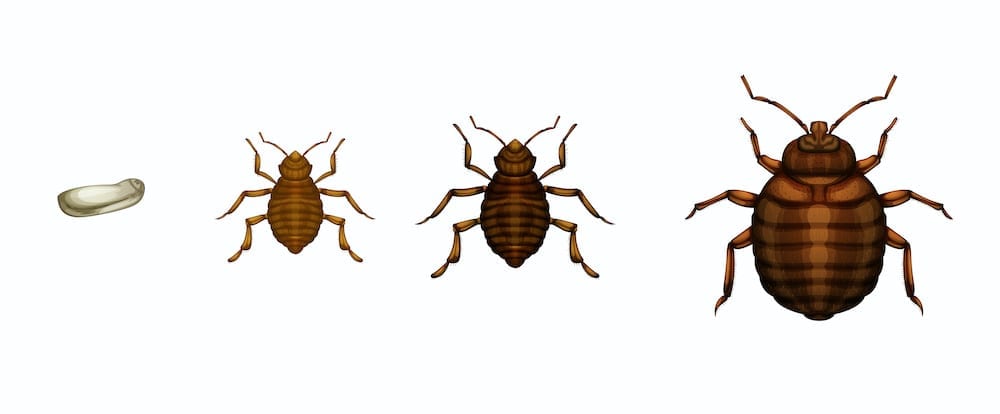What Do Bed Bugs Look Like?
A bed bug is a small, oval-shaped insect that feeds by sucking blood from any warm-blooded animal. These pests can live pretty much anywhere and are often found in cracks, mattresses, and upholstered furniture.
Bed bug infestations typically start in beds. These bugs find their way into your bedding to take blood from you and then hide in bed frames, springs, and mattresses. Common signs that they’re present are small bite marks on your hands, arms, neck, and face.
Do you think you might have bed bugs? Keep reading to learn how to identify bed bugs by their appearance.
How To Identify A Bed Bug
Bed bugs are one of the most common household insects in the world. Despite this, people find it difficult to distinguish them from other small insects.
Bed bugs are pretty distinct from other insects, and you’ll need to know how to identify them in order to act fast and prevent an infestation. In this piece, we’ll look at how a bed bug’s appearance is unique and examine what other insects you might mistake as bed bugs.
Bed Bugs Appearance: Size
One of the most prominent things you’ll notice about bed bugs is that they’re small. They vary in size based on their age. The nymph (baby) bed bugs usually range between 0.08”–0.20” in length. The grown bed bugs are about a quarter of an inch long, and they can develop further to the size of an apple seed.
Bed Bugs Appearance: Shape
There’s not much to talk about bed bugs’ shape aside from the adults having flat, oval-shaped bodies. Aside from that, a bed bug comes with six legs and two antennae. Bed bugs also don’t have any wings.
Bed Bugs Appearance: Color
A bed bug egg is white and can be challenging to spot, partly due to its tiny size.
Bed bugs in the nymphal stage are more translucent. Their abdomens become much redder after they feed. The color eventually fades into brown as they digest their food. It turns black once they complete the digestion process.
Their bodies molt and take on a dark-brown hue as the nymphs grow. Fully-grown adult bed bugs have brown or rusty red stomachs, and their bellies still turn deep red when they feed.
Insects That Can Be Mistaken For Bed Bugs
Bed bugs share some qualities with several other insects, so it’s easy for people to mistake them for something else. Here are some of the most common insects that share similarities with bed bugs’ appearance:
Ticks
Ticks vary in color and size like bed bugs. Also, like bed bugs, they have small round shapes to their bodies. They appear flat before feeding, and many of them are either brown or red, too.
Cockroach Nymphs
The nymphs of cockroaches look similar to those of bed bugs. They soon turn reddish-brown like bed bugs. Bed bugs and cockroaches also differ on several fronts. Cockroaches can be much bigger than bed bugs, for one. Cockroaches also have wings, while bed bugs don’t.
Lice
Lice are tiny, like bed bugs. They also have red portions on their midsection. Both animals have two antennae, and lice don’t have wings either. You can tell them apart by looking closer. You’ll find that lice have transparent parts to their bodies.
There you have it! Bed bugs share several qualities with other insects around the world, but they’re also unique in their own way. Taking a closer look can help you discern their unique features and realize whether you’re dealing with bed bugs or some other insects.
With that knowledge, you should be able to identify bed bugs by their appearance and stop an infestation before it happens.
Have You Spotted Bed Bugs?
If you think you have bed bugs or are interested in a home heat sanitation treatment, contact Bed Bug Barbeque, LLC in Lakewood, Ohio! We use heat treatment to eradicate bed bugs and we offer entire home sanitation heat treatments. This safe, effective treatment is completed in less than 12 hours, and Bed Bug Barbeque, LLC offers a 60-day warranty for you to verify for yourself that your bed bugs are fully eradicated. Contact Bed Bug Barbeque, LLC today for a FREE quote at (216) 221-1227 or through our website, and check out our other bed bug informational resources on identification, prevention, and eradication.







